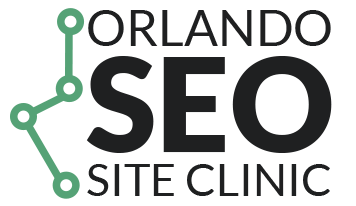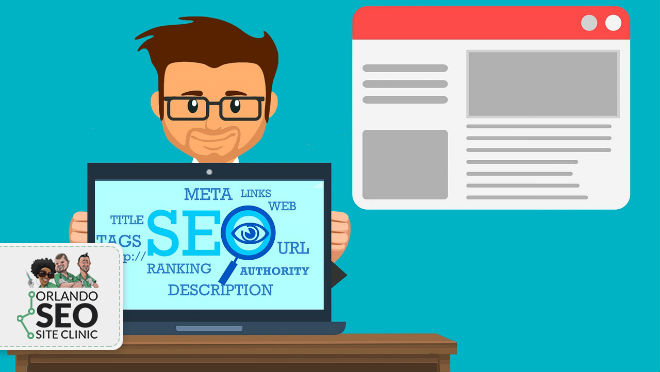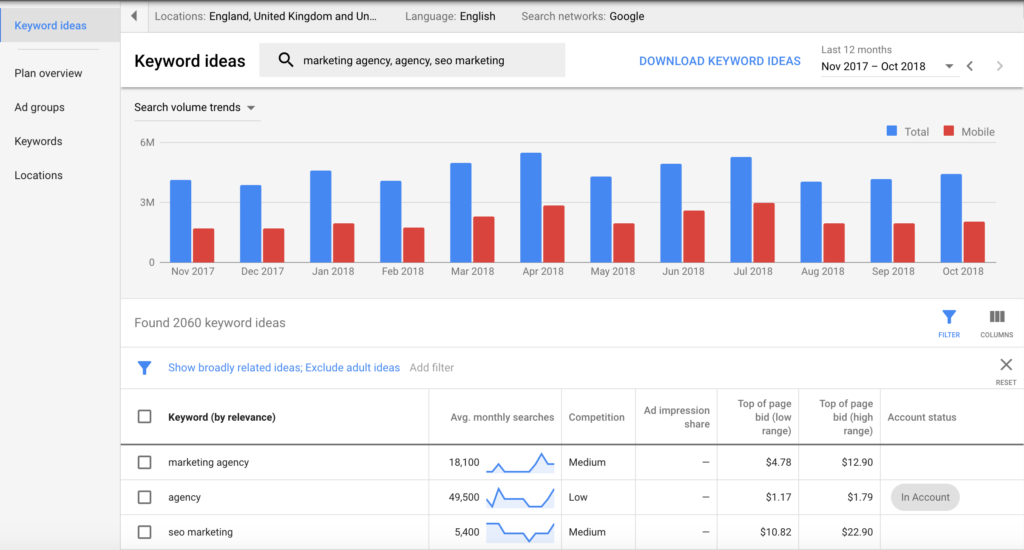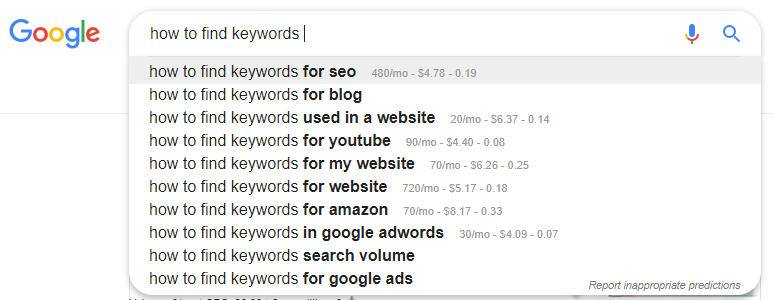On-page SEO is one of the easiest forms of SEO to utilize. It involves putting specific strategies to work to draw attention to your content.
When your on-page content is optimized correctly, the search engine bots won’t have a problem finding the keywords, and other terms sprinkled into your content. They’ll be able to properly rank your site so that other users will be able to find it, especially when they search for your correctly used keywords.
Many people think that keywords are the only part of on-page SEO that matters when this is actually far from the truth.
As it turns out, these twelve steps will talk you through the process.
1. Make Sure That You Use Keywords That Match Your Content
While keywords aren’t the only part of on-page SEO that matters, they shouldn’t be overlooked. It’s effortless to find the right keywords that you want to use, thanks to the many handy online tools, some of which are provided by the largest search engine out there – Google.
However, you shouldn’t just locate some of the most-used keywords and then include them in your web content. Those keywords need to match your overall topic. You’ll end up getting penalized for not choosing words that directly relate to your content. Don’t mess with the algorithm in this way, and everything will be all right.
2. Update Your Meta Descriptions
Meta descriptions are an essential part of on-page SEO. They allow you to place your keywords in a prominent location, ensuring that you get even more visibility for them.
On top of this, thanks to tools like Yoast for WordPress, you’ll be able to move beyond those meta descriptions and see what other things you can do to improve those search engine results.
This vital piece of the on-page SEO puzzle isn’t always visible to your users, but the search engine bots certainly know that it’s there, and they are what matter the most. You need to attract them.
3. Redirect Your URLs
How accurate are your URLs? We aren’t talking about the main URL for your website, which can be tough to change, especially since you’d have to update everything else on and off of your site, like your listings, business cards, and so on.
Instead, we mean the sub-URLs.
When someone goes to you “about us” page, what’s the URL? Does it point out that this is the About Us page? Or does it utilize some critical keywords?
Ideally, you’ll work your keywords into those URLs – in an appropriate manner, of course – and then redirect the original ones to the updated version so that Google doesn’t steer people towards a page that no longer exists.
4. Adjust Your H1 Headers
Do you have H1 headers, H2 headers, and even H3 headers on your website?
If not, then you should seriously include using them. They are suitable for your readers, as they break up the content in a very logical manner. They’re even better for your SEO, as it allows you to work in those keywords in a broad context.
The search engine bots will look for this information and use it when they determine what your ranking should be. If you set up those headers correctly, then you’ll be rewarded with higher rankings for specific targeted keywords.
5. Use Yoast or a Similar Tool
We mentioned Yoast above in the step about meta descriptions. It’s recommended that you use this tool or something similar to it like SEOquake, Jetpack for WordPress, etc. to ensure that your SEO strategy is as updated as it should be. The more details you include, following its suggestions, the better off everything will be.
Yoast is one of the best SEO tools on the market (and it’s free, for the record) and it will really make a difference in your on-page SEO. We highly recommend using this one.
6. Make Sure That Your Site Is Responsive
A responsive website is one that’s designed to change its size and shape when people look at it on their mobile devices. Seeing as how over half of the people in developing nations use a tablet, smartphone, or similar device to search the internet, it’s essential that your site is optimized for them. Websites that aren’t will turn away these people, as they are too hard to read or navigate.
While some web hosts will automatically update this setting for you, with others, you may have to do it manually. The search engine bots reward sites with this responsive code, so it is an integral part of your on-page SEO.
7. Send Your Site Map to the Search Engines
Did you know that you can help the search engines crawl your site by submitting a site map? These maps aren’t precisely “maps” per se. Instead, they are listings of the pages that make up your website.
When you submit one of these maps, it prompts the search engine to crawl your website, giving it some structure to look at. Plus, it speeds up the process of getting each page indexed on Google. The more quickly this is done, the faster your website will end up in the search results.
8. Place Keywords in Your URLs
We mentioned this briefly above, but it’s essential to go over it again. If you can update all of the URLs on your site to include your chosen keywords, then it will help your website in moving up the ranking ladder.
Even better, if you’re starting from scratch with your site and the main URL that includes your keywords is available, then go ahead and use it. It will help your website pop up near the top when people search for those terms.
9. Include Photos or Embed Videos
On-page SEO is no longer just about written content. It includes things like photographs and videos as well.
On top of this, you don’t want to use stock photos if you can help it. Always take your own, because of the search engines like originality.
However, if you need to use stock photos, try to find some that are quite as “stock like.” If they look like great photos, use them, is the point we’re trying to make here. Plus, when you add these photos and videos to your site, make sure that you use alt tags.
Place the keywords in them, and change the names of the files to match your keywords. This just gives you a little extra leg up on the competition.
10. Link to Good Outside Sources
The outside sources that you link to matter quite a bit. You need to connect to sites with good reputations, not just any old place that allows you to link to it. The better the outside source is; the more clout it will give you.
Before you use a site for information, go through and do a little research on it. If it appears on the first page of web results for the keywords that you’re looking for, then it’s a good site to link to. Otherwise, keep searching until you find the best option.
11. Include Internal Links
Internal links are those that go to other pages of your website. You need to make sure that every page links to one or two others, and not just rely on people to utilize the menu at the top or side of the screen to move around the site.
These links are an essential part of your SEO strategy, as they save people time and show that the other sections of your site are worth going to. The search engine bots will use this as one of your ranking factors, so go through your website and make sure that everything is correctly linked on those pages.
12. Make Sure That Your Site Loads Quickly
Although site load speeds fall more on the technical side of SEO, they do still apply to the on-page part as well. Your site needs to load quickly, or else you’ll end up losing traffic, and you’ll be penalized by the search engines.
No one wants to wait more than 30 seconds or so for a website to load. If it takes longer than this, they’ll hit that back button and patronize one of your competitors instead.
Plus, the search engines will take note of this – and your slow load speeds – and knock your site down in the rankings.
If you genuinely want to build your business brand online and move up to that crucial first page of the search results, use one of the many tools to see how fast your page loads and then follow the steps provided to improve it. The quicker it loads, the better your results will be, and the more your business will take off. It’s that easy!
Overall, there are many parts of on-page SEO. It goes far beyond just using the right keywords and making sure that your content is relevant. If you follow all 12 of the steps listed here, you’ll see your search engine rank rise reasonably quickly.
Author Bio:
Sameer Panjwani is the Founder & CEO of Mondovo, an online marketing toolset that helps digital marketers track rankings, monitor site stats, and research competitors. A man of many talents, Sameer is currently on a mission to help 1 million businesses grow organically through his products and services.



